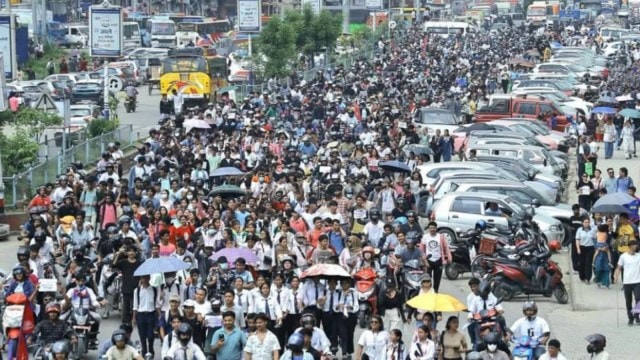
Protests that began in Mexico this week, stretching across more than 50 cities, are part of a much bigger global story that governments have been too slow to understand. At the centre of it is Generation Z, a demographic tired of corruption, joblessness and political decay. In Mexico, one young protester shouted into the streets, “It is about letting the government know that we are willing to go that far. Because when those at the bottom move, those at the top fall.” This sentiment has echoed in Kathmandu, Jakarta and Antananarivo. The language changes, the slang shifts, but the idea is the same. Gen Z has discovered its political power, and it is no longer speaking in whispers.
The phenomenon of young people driving consequential political change is obviously not new. There is a painful pattern: Protests erupt, governments fall or concede to temporary pressure, and then the old order reasserts itself.
The Arab Spring is the clearest example. Massive, social-media-driven uprisings once seemed destined to reshape the region. A decade later, almost every country that ousted its leader has reverted to authoritarianism or worse. Even Tunisia, the so-called success story, is now under increasingly autocratic rule. The core problem can be framed in a single line. Leaderless protests feel democratic, but that is also their downfall. Without internal organisation, without a clear political structure, the young voices that lead revolutions often find themselves excluded from the systems they helped topple.
Across South and Southeast Asia, the last few years have seen one youth-led uprising after another. Last year, the massive student-led movement in Bangladesh toppled the government of Sheikh Hasina. In Nepal, young people angered by mounting corruption ousted the government in power in early September. Indonesia has seen waves of demonstrations since August, driven by younger citizens furious about legal reforms, economic stagnation and a leadership they feel no longer represents them.
The internet has made these movements feel strangely familiar to each other. A poster spotted in Nepal read, “corruption is sus, stop ghosting democracy”. This could have been written in Jakarta or Mexico City, or in Kathmandu. TikTok clips and Discord chats have created a shared political vocabulary among young people who may never meet, yet recognise the same injustices in their cities. Reports on Nepal’s protests mentioned that the demonstrators constantly referenced movements in Indonesia. Similar things were seen in Madagascar. Gen Z around the world is not just protesting. It is borrowing tactics, memes, slogans and political imagination from each other in real time.
But for all that energy, studies suggest that modern movements are less effective than their predecessors at shaping long-term political outcomes. And this problem is becoming visible in the new Gen Z uprisings across Asia. In Bangladesh, young people celebrated when Hasina fell and Muhammad Yunus took charge as caretaker prime minister. Yet many of those same student protesters now believe the interim government has failed to deliver on anti-corruption and economic reforms. A recently announced political roadmap sparked further protests from students who see it as weak and insufficient. The military remains the most powerful actor in the country and is losing patience.
Nepal is experiencing its own version of this disappointment. Members of Hami Nepal, the youth group that organised the protests, initially worked with the new interim prime minister. Now they say they have been sidelined. Their fear is simple: What if everything goes back to the way it was, even after the bloodshed, the marches and the sacrifices?
Governments today can also shut down movements faster. The same technology that helps protesters organise can be used to splinter movements, push disinformation and intimidate first-time demonstrators. Myanmar’s 2021 protests were crushed violently. Indonesia’s young protesters forced modest concessions, only for President Prabowo Subianto to later stonewall reforms and endorse a broader crackdown.
Yet some exceptions show what is possible when youth movements build alliances rather than relying solely on digital mobilisation. Sri Lanka is a case in point. The 2022 protests toppled the Rajapaksa dynasty and sparked a political transformation. The election of Anura Kumara Dissanayake and the rise of the National People’s Power party show that youth-driven discontent can turn into sustainable political change when it connects with established civil society networks and institutional actors.
What the world is witnessing is a generation that has the courage to shake political structures but not yet the tools to rebuild them. They know how to mobilise thousands in minutes. They know how to topple leaders. The challenge lies in what comes after the uprising. Gen Z has power. What it needs next is patience, organisation and alliances that can turn its digital energy into lasting democratic reform.
sudhanshu.mishra@indianexpress.com